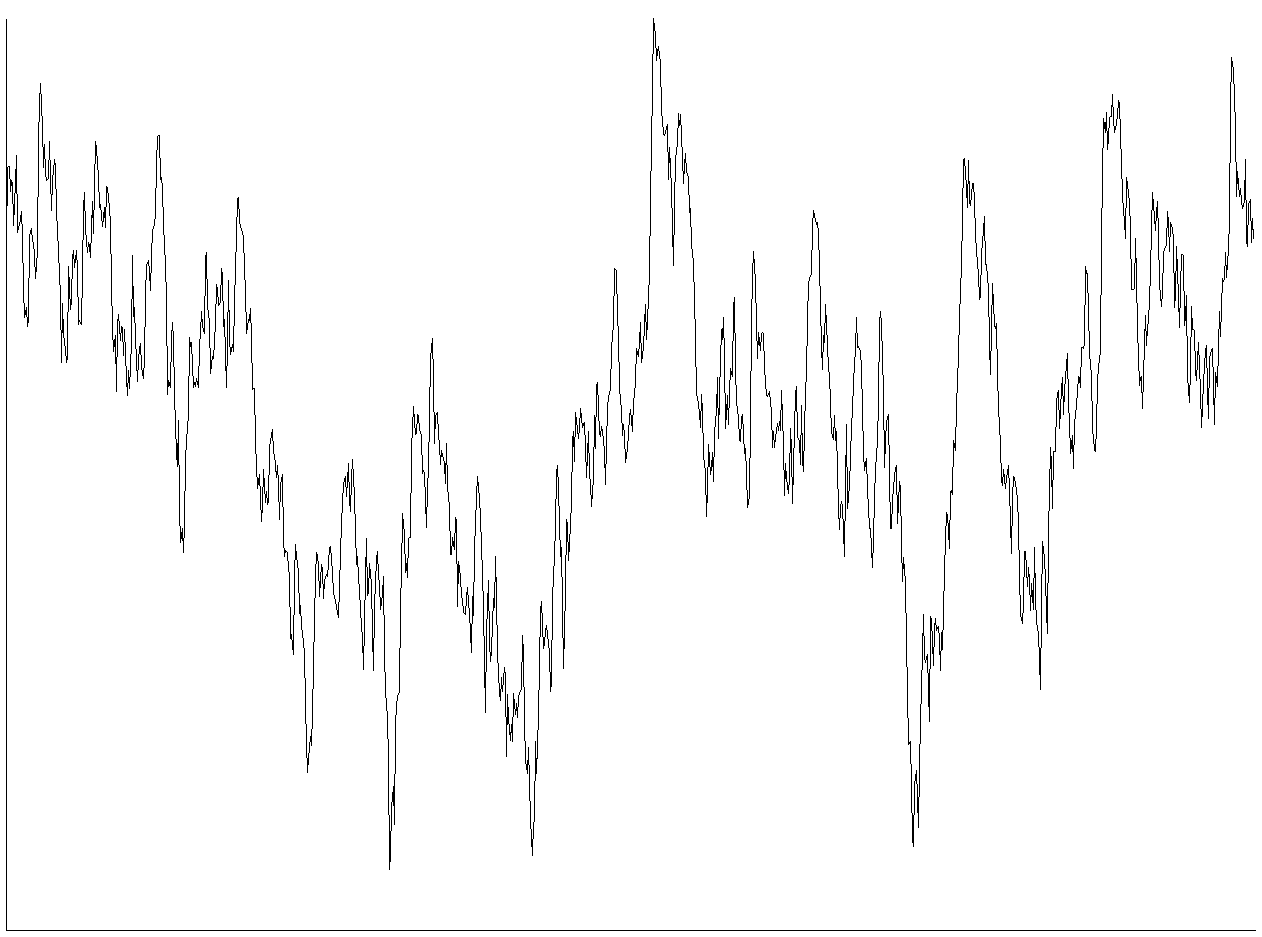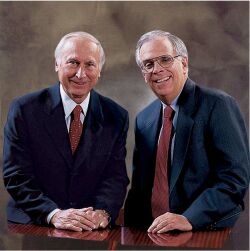|
SINAD
Signal-to-noise and distortion ratio (SINAD) is a measure of the quality of a signal from a communications device, often defined as : \mathrm = \frac, where P is the average power of the signal, noise and distortion components. SINAD is usually expressed in dB and is quoted alongside the receiver RF sensitivity, to give a quantitative evaluation of the receiver sensitivity. Note that with this definition, unlike SNR, a SINAD reading can never be less than 1 (i.e. it is always positive when quoted in dB). When calculating the distortion, it is common to exclude the DC components. Due to widespread use, SINAD has collected several different definitions. SINAD is commonly defined as: #The ratio of (a) total received power, i.e., the signal to (b) the noise-plus-distortion power. This is modeled by the equation above. #The ratio of (a) the power of a test signal, i.e. a sine wave, to (b) the residual received power, i.e. noise-plus-distortion power. With this definition, it is po ... [...More Info...] [...Related Items...] OR: [Wikipedia] [Google] [Baidu] |
Effective Number Of Bits
Effective number of bits (ENOB) is a measure of the dynamic range of an analog-to-digital converter (ADC), digital-to-analog converter, or their associated circuitry. The resolution of an ADC is specified by the number of bits used to represent the analog value. Ideally, a 12-bit ADC will have an effective number of bits of almost 12. However, real signals have noise, and real circuits are imperfect and introduce additional noise and distortion. Those imperfections reduce the number of bits of accuracy in the ADC. The ENOB describes the effective resolution of the system in bits. An ADC may have a 12-bit resolution but the effective number of bits, when used in a system, may be 9.5. ENOB is also used as a quality measure for other blocks such as sample-and-hold amplifiers. Thus analog blocks may be included in signal-chain calculations. The total ENOB of a chain of blocks is usually less than the ENOB of the worst block. The frequency band of a signal converter where ENOB is sti ... [...More Info...] [...Related Items...] OR: [Wikipedia] [Google] [Baidu] |
Distortion
In signal processing, distortion is the alteration of the original shape (or other characteristic) of a signal. In communications and electronics it means the alteration of the waveform of an information-bearing signal, such as an audio signal representing sound or a video signal representing images, in an electronic device or communication channel. Distortion is usually unwanted, and so engineers strive to eliminate or minimize it. In some situations, however, distortion may be desirable. For example, in noise reduction systems like the Dolby system, an audio signal is deliberately distorted in ways that emphasize aspects of the signal that are subject to electrical noise, then it is symmetrically "undistorted" after passing through a noisy communication channel, reducing the noise in the received signal. Distortion is also used as a musical effect, particularly with electric guitars. The addition of noise or other outside signals ( hum, interference) is not co ... [...More Info...] [...Related Items...] OR: [Wikipedia] [Google] [Baidu] |
Spurious-free Dynamic Range
Spurious-free dynamic range (SFDR) is the strength ratio of the fundamental signal to the strongest spurious signal in the output. It is also defined as a measure used to specify analog-to-digital and digital-to-analog converters (ADCs and DACs, respectively) and radio receivers. SFDR is defined as the ratio of the RMS value of the carrier wave (maximum signal component) at the input of the ADC or output of DAC to the RMS value of the next largest noise or harmonic distortion component (which is referred to as “spurious” or a “spur”) at its output. SFDR is usually measured in dBc (i.e. with respect to the carrier signal amplitude) or in dBFS (i.e. with respect to the ADC's full-scale range). Depending on the test condition, SFDR is observed within a pre-defined frequency window or from DC up to Nyquist frequency of the converter (ADC or DAC). In case of a radio receiver application, the definition is slightly different. The reference is the minimum detectable signa ... [...More Info...] [...Related Items...] OR: [Wikipedia] [Google] [Baidu] |
Signal-to-noise Ratio
Signal-to-noise ratio (SNR or S/N) is a measure used in science and engineering that compares the level of a desired signal to the level of background noise. SNR is defined as the ratio of signal power to the noise power, often expressed in decibels. A ratio higher than 1:1 (greater than 0 dB) indicates more signal than noise. SNR, bandwidth, and channel capacity of a communication channel are connected by the Shannon–Hartley theorem. Definition Signal-to-noise ratio is defined as the ratio of the power of a signal (meaningful input) to the power of background noise (meaningless or unwanted input): : \mathrm = \frac, where is average power. Both signal and noise power must be measured at the same or equivalent points in a system, and within the same system bandwidth. Depending on whether the signal is a constant () or a random variable (), the signal-to-noise ratio for random noise becomes: : \mathrm = \frac where E refers to the expected value, i.e. in thi ... [...More Info...] [...Related Items...] OR: [Wikipedia] [Google] [Baidu] |
Total Harmonic Distortion
The total harmonic distortion (THD or THDi) is a measurement of the harmonic distortion present in a signal and is defined as the ratio of the sum of the powers of all harmonic components to the power of the fundamental frequency. Distortion factor, a closely related term, is sometimes used as a synonym. In audio systems, lower distortion means the components in a loudspeaker, amplifier or microphone or other equipment produce a more accurate reproduction of an audio recording. In radio communications, devices with lower THD tend to produce less unintentional interference with other electronic devices. Since harmonic distortion tends to widen the frequency spectrum of the output emissions from a device by adding signals at multiples of the input frequency, devices with high THD are less suitable in applications such as spectrum sharing and spectrum sensing. In power systems, lower THD implies lower peak currents, less heating, lower electromagnetic emissions, and less core loss ... [...More Info...] [...Related Items...] OR: [Wikipedia] [Google] [Baidu] |
Noise (electronics)
In electronics, noise is an unwanted disturbance in an electrical signal. Noise generated by electronic devices varies greatly as it is produced by several different effects. In particular, noise is inherent in physics, and central to thermodynamics. Any conductor with electrical resistance will generate thermal noise inherently. The final elimination of thermal noise in electronics can only be achieved cryogenically, and even then quantum noise would remain inherent. Electronic noise is a common component of noise in signal processing. In communication systems, noise is an error or undesired random disturbance of a useful information signal in a communication channel. The noise is a summation of unwanted or disturbing energy from natural and sometimes man-made sources. Noise is, however, typically distinguished from interference, for example in the signal-to-noise ratio (SNR), signal-to-interference ratio (SIR) and signal-to-noise plus interference ratio (SNIR) m ... [...More Info...] [...Related Items...] OR: [Wikipedia] [Google] [Baidu] |
Digital-to-analog Converter
In electronics, a digital-to-analog converter (DAC, D/A, D2A, or D-to-A) is a system that converts a digital signal into an analog signal. An analog-to-digital converter (ADC) performs the reverse function. There are several DAC architectures; the suitability of a DAC for a particular application is determined by figures of merit including: resolution, maximum sampling frequency and others. Digital-to-analog conversion can degrade a signal, so a DAC should be specified that has insignificant errors in terms of the application. DACs are commonly used in music players to convert digital data streams into analog audio signals. They are also used in televisions and mobile phones to convert digital video data into analog video signals. These two applications use DACs at opposite ends of the frequency/resolution trade-off. The audio DAC is a low-frequency, high-resolution type while the video DAC is a high-frequency low- to medium-resolution type. Due to the comple ... [...More Info...] [...Related Items...] OR: [Wikipedia] [Google] [Baidu] |
Analog Devices, Inc
Analog Devices, Inc. (ADI), also known simply as Analog, is an American multinational semiconductor company specializing in data conversion, signal processing and power management technology, headquartered in Wilmington, Massachusetts. The company manufactures analog, mixed-signal and digital signal processing (DSP) integrated circuits (ICs) used in electronic equipment. These technologies are used to convert, condition and process real-world phenomena, such as light, sound, temperature, motion, and pressure into electrical signals. Analog Devices has approximately 100,000 customers in the following industries: communications, computer, instrumentation, military/aerospace, automotive, and consumer electronics applications.Bloomberg.ADI: Analog Devices Inc Summary" Retrieved January 30, 2011. History The company was founded by two MIT graduates, Ray Stata and Matthew Lorber in 1965. The same year, the company released its first product, the model 101 op amp,Richard Wilson, El ... [...More Info...] [...Related Items...] OR: [Wikipedia] [Google] [Baidu] |
Analog-to-digital Converter
In electronics, an analog-to-digital converter (ADC, A/D, or A-to-D) is a system that converts an analog signal, such as a sound picked up by a microphone or light entering a digital camera, into a digital signal. An ADC may also provide an isolated measurement such as an electronic device that converts an analog input voltage or current to a digital number representing the magnitude of the voltage or current. Typically the digital output is a two's complement binary number that is proportional to the input, but there are other possibilities. There are several ADC architectures. Due to the complexity and the need for precisely matched components, all but the most specialized ADCs are implemented as integrated circuits (ICs). These typically take the form of metal–oxide–semiconductor (MOS) mixed-signal integrated circuit chips that integrate both analog and digital circuits. A digital-to-analog converter (DAC) performs the reverse function; it converts a digita ... [...More Info...] [...Related Items...] OR: [Wikipedia] [Google] [Baidu] |
Signal (electronics)
In signal processing, a signal is a function that conveys information about a phenomenon. Any quantity that can vary over space or time can be used as a signal to share messages between observers. The '' IEEE Transactions on Signal Processing'' includes audio, video, speech, image, sonar, and radar as examples of signal. A signal may also be defined as observable change in a quantity over space or time (a time series), even if it does not carry information. In nature, signals can be actions done by an organism to alert other organisms, ranging from the release of plant chemicals to warn nearby plants of a predator, to sounds or motions made by animals to alert other animals of food. Signaling occurs in all organisms even at cellular levels, with cell signaling. Signaling theory, in evolutionary biology, proposes that a substantial driver for evolution is the ability of animals to communicate with each other by developing ways of signaling. In human engineering, signals are t ... [...More Info...] [...Related Items...] OR: [Wikipedia] [Google] [Baidu] |
Noise
Noise is unwanted sound considered unpleasant, loud or disruptive to hearing. From a physics standpoint, there is no distinction between noise and desired sound, as both are vibrations through a medium, such as air or water. The difference arises when the brain receives and perceives a sound. Acoustic noise is any sound in the acoustic domain, either deliberate (e.g., music or speech) or unintended. In contrast, noise in electronics may not be audible to the human ear and may require instruments for detection. In audio engineering, noise can refer to the unwanted residual electronic noise signal that gives rise to acoustic noise heard as a hiss. This signal noise is commonly measured using A-weighting or ITU-R 468 weighting. In experimental sciences, noise can refer to any random fluctuations of data that hinders perception of a signal. Measurement Sound is measured based on the amplitude and frequency of a sound wave. Amplitude measures how forceful the wave is. The e ... [...More Info...] [...Related Items...] OR: [Wikipedia] [Google] [Baidu] |





